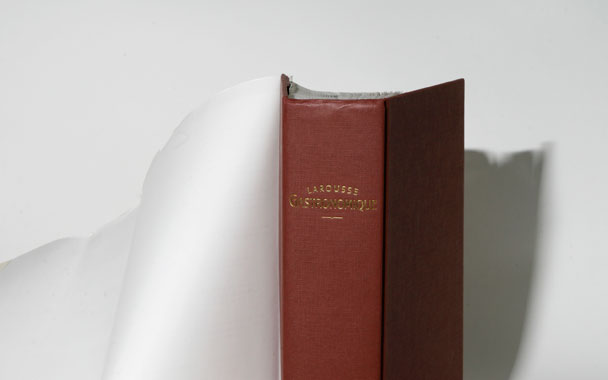Dessert without cheese is like a woman with one eye.” So goes one of the many blunt aphorisms peppered throughout the thousand pages of the 1961 Larousse Gastronomique. The originator of the quote was 19th-century gastronome Brillat-Savarin, whom the editors of the book—a hybrid encyclopaedia and cookbook—cite with a breathless reverence throughout the text.
I came to the Larousse looking for a recipe for beef tournedos. The book sat on a low shelf in my parents’ living room beside the Oxford Companion to Wine, and it looked like neither one had been opened since my mother gave my father the wine book and he gave her the cookery tome (such marital expectations!). First published in French in 1938, the Larousse comes from the school of Auguste Escoffier; it includes 8,500 recipes, and was long considered culinary gospel.
Heaving it onto my lap and searching the index under “beef,” I found 18 recipes for tournedos alone. “Rump” had another 5, “entrecôte” 21. The recipes, like this one for Tournedos Marguery, offer almost no explanation of the steps: “Sauté the tournedos in butter. Arrange each on an artichoke heart filled with a salpicon of truffles à la crème. Fill the middle of the dish with morels fried in butter and put a few cock’s combs and kidneys between each of the tournedos. Dilute the pan juices with port, add fresh cream, reduce and pour over the tournedos.” Above the recipe is an ornate illustration, six tournedos constituting one portion.
I moved on to Julia Child, whose Mastering the Art of French Cooking appeared the same year as the Larousse English edition. I now saw what she had reckoned with. The Larousse recipe for croissants is four short paragraphs—Julia’s is eight illustrated pages. What the Larousse implies, Julia shows.
Like The Joy of Cooking, the Larousse had later editions that brought it into the modern era, made it more palatable. But the edits also took away the original’s unabashed exultation of food; the writing in that first edition drew me back for pleasure reading, if not real instruction. Were it not for the 1961 Larousse, I doubt I would have ever discovered the 17th-century poet St. Amant and his ode to Brie:
Now then, let us shout with all our might:
Blessed be the land of Brie…
For one has only to press it with one’s fingers
For it to run over with fat.
Why then, is it not endless,
As indeed its circular form is endless?
The book covers more than French cuisine: There are entries on Greek banquets, Muslim customs, and New Guinean okra. Yet this dizzying survey, while occasionally pedantic, is fundamentally dedicated to techniques honed in centuries of home kitchens. Its voice is not just that of the scholar or the poet; it is also that of the matronly bistro cook who tells you to blow on the sauce to separate its fat, the Burgundy farmer who returns from a forest walk with an armful of morels.
Now if only I could bring myself to listen to those voices and cook Tournedos Marguery.



 Pinterest
Pinterest


